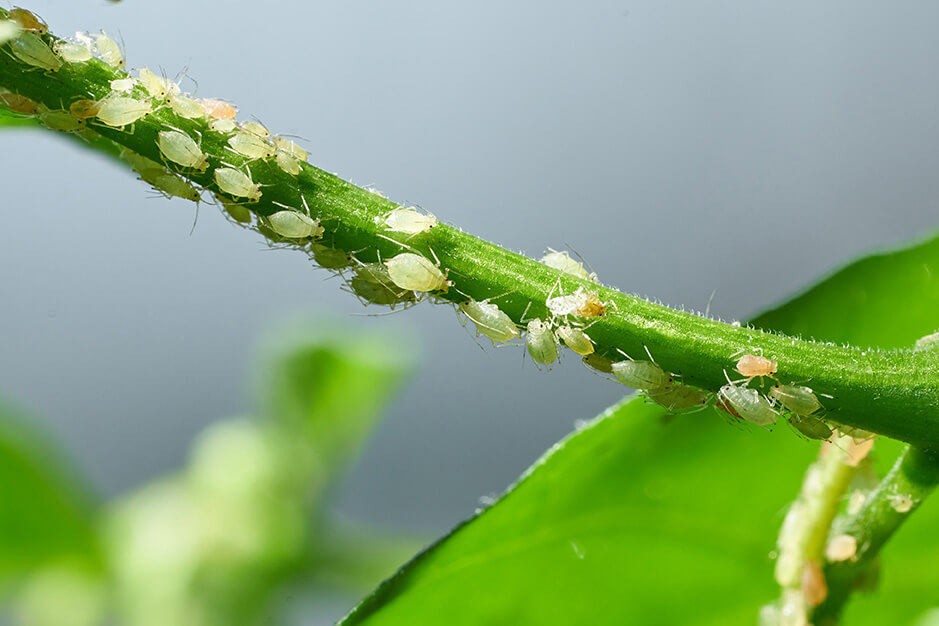
Common Lawn and Garden Pests
Spring has arrived and green is overtaking white. However, the growing season is accompanied by pests who like to feast on our landscapes. Below, we’ll shed light on some of the most common lawn and garden pests in Southwestern Ontario – their origins, identification, prevention, and management strategies.
Japanese Beetles (Popillia japonica)
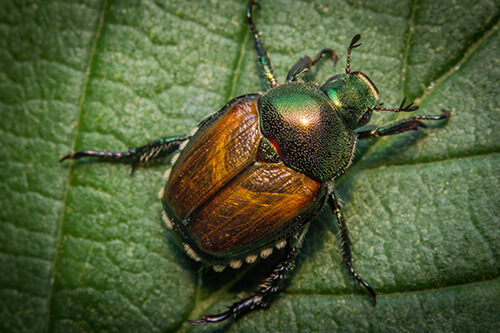 Japanese beetles were introduced from Japan in the early 20th century and have since made themselves at home in Southwestern Ontario. These beetles have a metallic green color with copper-colored wings and are often found munching on the leaves of roses, grapes, and fruit trees.
Japanese beetles were introduced from Japan in the early 20th century and have since made themselves at home in Southwestern Ontario. These beetles have a metallic green color with copper-colored wings and are often found munching on the leaves of roses, grapes, and fruit trees.
Control Methods
- Handpick the beetles
- Use row covers
- Apply insecticidal soap or neem oil
- Introduce beneficial nematodes to target the larvae
Dealing with Damage
Prune damaged foliage and promote plant health through proper care.
Aphids (Aphidoidea)
 Aphids are native to North America and thrive in our temperate climate, reproducing rapidly and infesting a wide range of plants. This makes Aphids one of the most common among the common lawn and garden pests in our region. Look for clusters of small, green, pear-shaped insects on plant stems and new growth of various garden plants, including roses, vegetables, and fruit trees.
Aphids are native to North America and thrive in our temperate climate, reproducing rapidly and infesting a wide range of plants. This makes Aphids one of the most common among the common lawn and garden pests in our region. Look for clusters of small, green, pear-shaped insects on plant stems and new growth of various garden plants, including roses, vegetables, and fruit trees.
Control Methods
- Encourage natural predators such as ladybugs and lacewings
- Use insecticidal soap or neem oil, and blast aphids off plants with a strong stream of water.
Dealing with Damage
Prune heavily infested areas and monitor plant recovery.
Emerald Ash Borer (Agrilus planipennis)
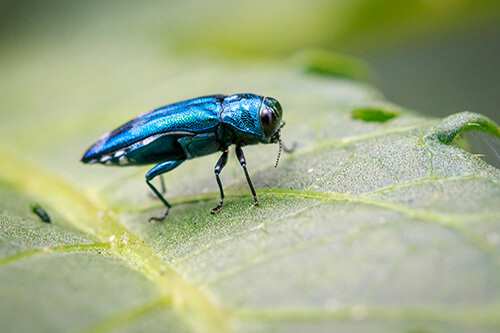 Native to Asia, emerald ash borers arrived in North America in the early 2000s and have devastated ash tree populations. Look for D-shaped exit holes in ash tree bark, canopy dieback, and S-shaped larval galleries under the bark.
Native to Asia, emerald ash borers arrived in North America in the early 2000s and have devastated ash tree populations. Look for D-shaped exit holes in ash tree bark, canopy dieback, and S-shaped larval galleries under the bark.
Control Methods
- Implement preventive treatments such as trunk injections with systemic insecticides
- Consider replacing susceptible ash trees with resistant species.
Dealing with Damage
Prune dead branches and monitor remaining ash trees for signs of infestation.
Spider Mites (Tetranychidae)
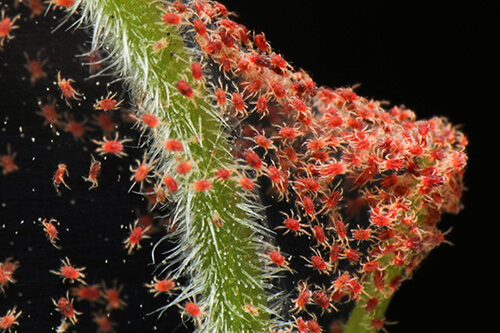 Spider mites are native to North America and thrive in warm, dry conditions, rapidly infesting plants. Look for fine webbing on the undersides of leaves and stippling or discoloration on foliage of garden plants, including tomatoes, beans, and ornamentals.
Spider mites are native to North America and thrive in warm, dry conditions, rapidly infesting plants. Look for fine webbing on the undersides of leaves and stippling or discoloration on foliage of garden plants, including tomatoes, beans, and ornamentals.
Control Methods
- Increase humidity around plants
- Introduce predatory mites or insects
- Apply horticultural oil or insecticidal soap
Dealing with Damage
Trim away heavily infested foliage and monitor plant recovery.
White Grubs (Scarabaeidae larvae)
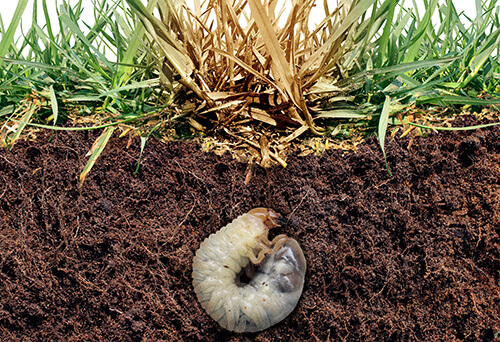 These soil-dwelling larvae are the immature stage of beetles like Japanese beetles, and they primarily feed on grass roots. Look for patches of dead or dying grass, which may indicate white grub infestation.
These soil-dwelling larvae are the immature stage of beetles like Japanese beetles, and they primarily feed on grass roots. Look for patches of dead or dying grass, which may indicate white grub infestation.
Control Methods
- Use beneficial nematodes or milky spore disease to target grubs in the soil
Dealing with Damage
Re-seed affected areas and maintain proper lawn care practices.
Cutworms (Noctuidae larvae)
 Cutworms are native to North America and are nocturnal pests that feed on young seedlings at or below ground level. Look for seedlings that have been cut off at the base.
Cutworms are native to North America and are nocturnal pests that feed on young seedlings at or below ground level. Look for seedlings that have been cut off at the base.
Control Methods
- Use collar barriers around seedlings
- Handpick cutworks from plants
- Apply biological controls
Dealing with Damage
Replant damaged seedlings and protect them from future attacks.
Slugs and Snails (Gastropoda)
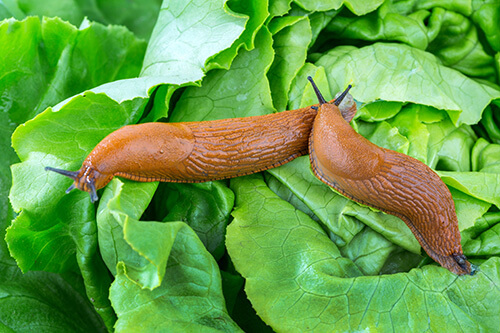 Slugs and snails are native to the region and are nocturnal pests that feed on plant foliage and tender shoots of a range of garden plants. Follow slime trails and look for irregular holes in leaves.
Slugs and snails are native to the region and are nocturnal pests that feed on plant foliage and tender shoots of a range of garden plants. Follow slime trails and look for irregular holes in leaves.
Control Methods
- Set up beer traps
- Apply diatomaceous earth
- Handpick them off of plants
- Introduce natural predators like toads and birds
Dealing with Damage
Trim away damaged foliage and keep garden areas clean and tidy.
Cabbage Worms (Pieris rapae)
 Cabbage worms are native to North America and are the larval stage of small white butterflies. As their name implies, they feed on brassica crops. Look for green caterpillars on cabbage family plants (cabbage, broccoli, kale), causing chewing damage to leaves.
Cabbage worms are native to North America and are the larval stage of small white butterflies. As their name implies, they feed on brassica crops. Look for green caterpillars on cabbage family plants (cabbage, broccoli, kale), causing chewing damage to leaves.
Control Methods
- Handpick caterpillars
- Use floating row covers
- Apply Bacillus thuringiensis (Bt)
- Encourage natural predators
Dealing with Damage
Trim away damaged leaves and protect plants from future infestations.
Thrips (Thysanoptera)
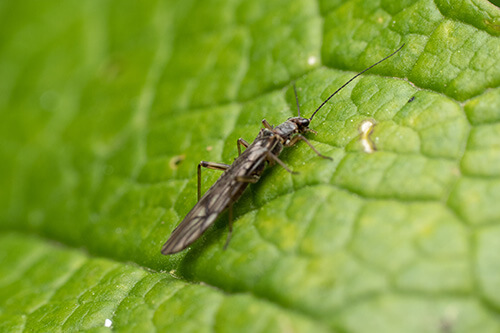 Thrips are native insects that feed on the sap of garden plants, including roses, onions, and peppers. They can transmit diseases to a wide range of plants. Look for tiny, slender insects and silvery patches on leaves.
Thrips are native insects that feed on the sap of garden plants, including roses, onions, and peppers. They can transmit diseases to a wide range of plants. Look for tiny, slender insects and silvery patches on leaves.
Control Methods
- Use insecticidal soap or neem oil
- Introduce predatory insects
Dealing with Damage
Trim away damaged foliage and monitor plant health.
Scale Insects (Coccoidea)
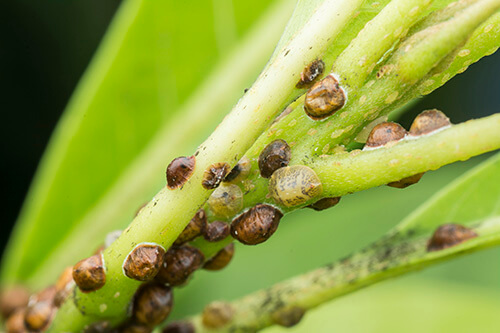 Scale insects are native to North America and can weaken or kill plants by feeding on sap and excreting honeydew of ornamental and fruit-bearing trees. Look for small, immobile insects on stems and leaves, often surrounded by a protective shell.
Scale insects are native to North America and can weaken or kill plants by feeding on sap and excreting honeydew of ornamental and fruit-bearing trees. Look for small, immobile insects on stems and leaves, often surrounded by a protective shell.
Control Methods
- Use horticultural oil or insecticidal soap
- Introduce natural enemies like ladybugs
Dealing with Damage
Prune away heavily infested branches and monitor plant recovery.
This guide will help prepare you to identify and combat common lawn and garden pests in Southwestern Ontario. Remember to stay vigilant, implement preventive measures, and maintain overall plant health to keep those pesky critters at bay.
Pest control product mentioned above – insecticidal soap, diatomaceous earth, neem oil, nematodes, collar barriers, floating row covers – are available at local garden centres. When purchasing, talk to staff about proper application/use for optimal effectiveness.

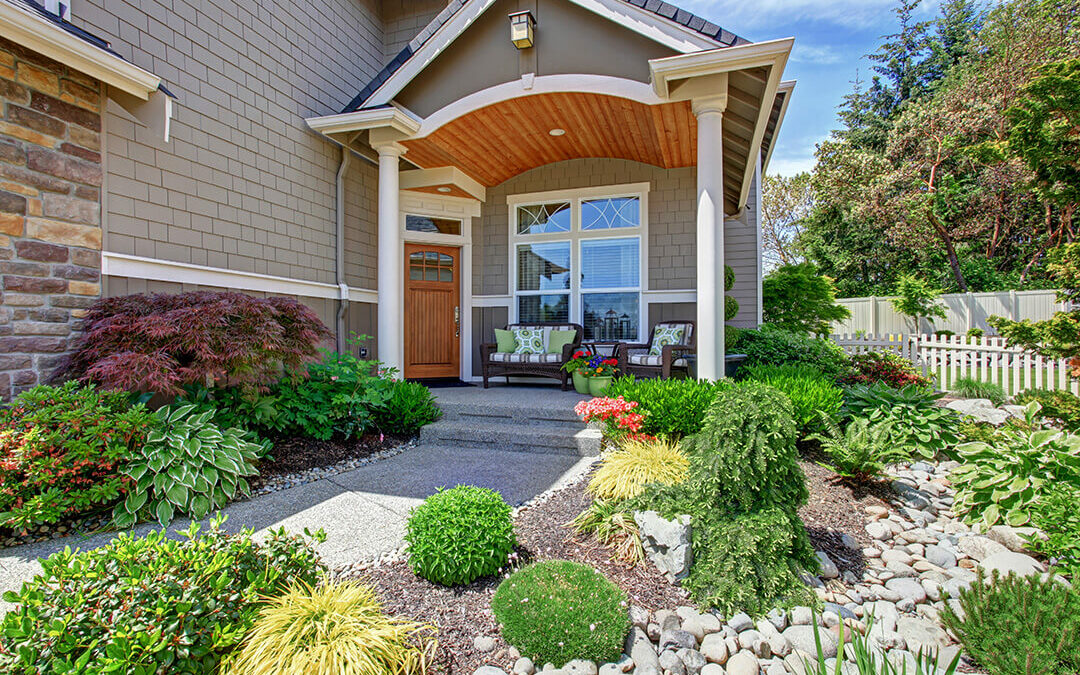
 Japanese Maple
Japanese Maple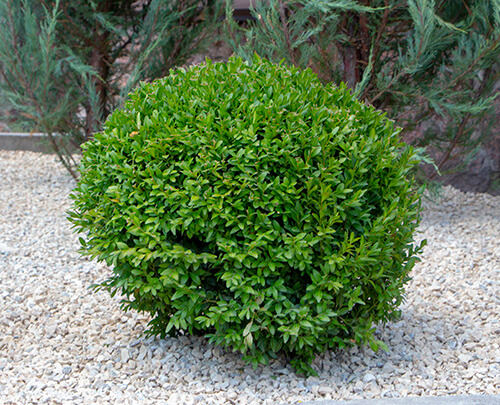 Boxwood
Boxwood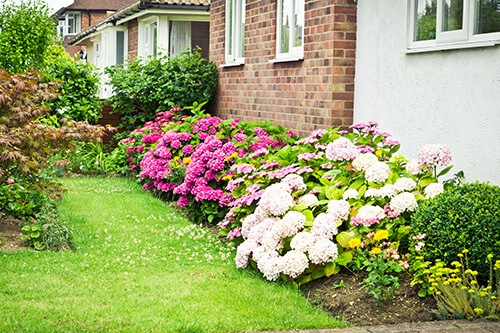 Rhododendrons and Azaleas
Rhododendrons and Azaleas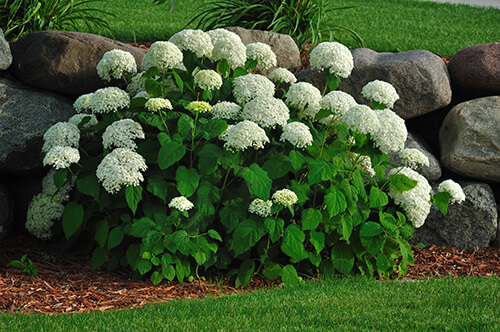 Compact Hydrangea
Compact Hydrangea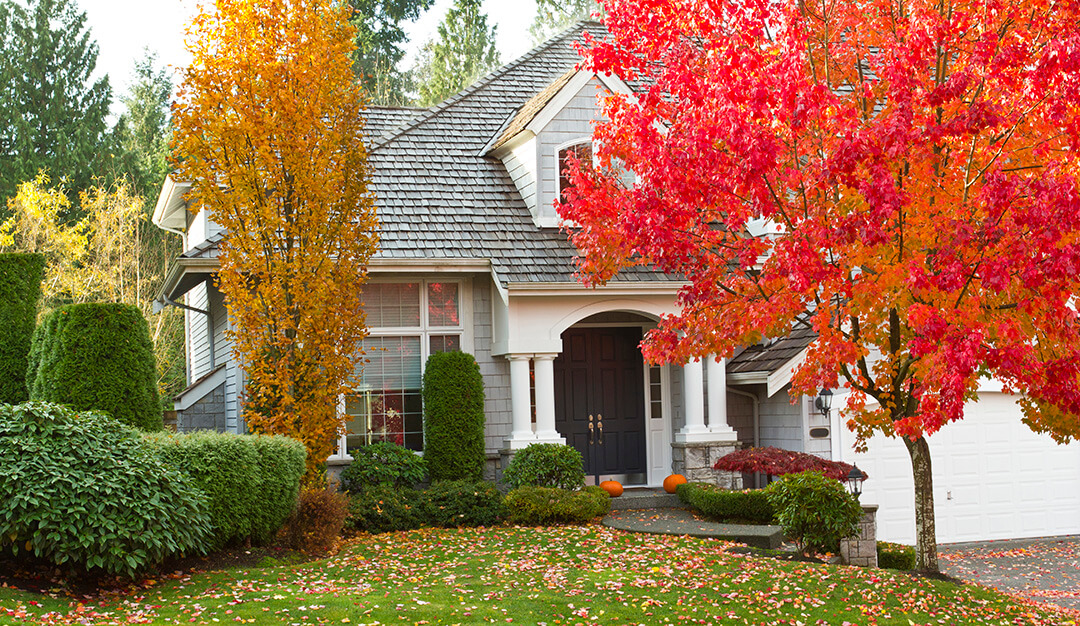
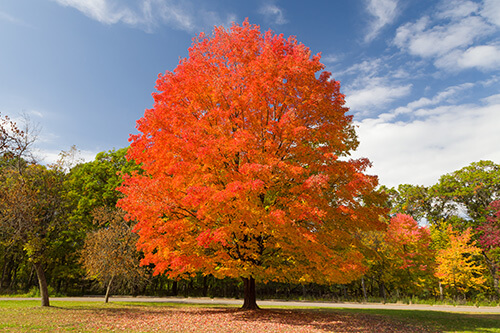 Sugar Maple (Acer spp.)
Sugar Maple (Acer spp.) Japanese Maples (Acer palmatum)
Japanese Maples (Acer palmatum)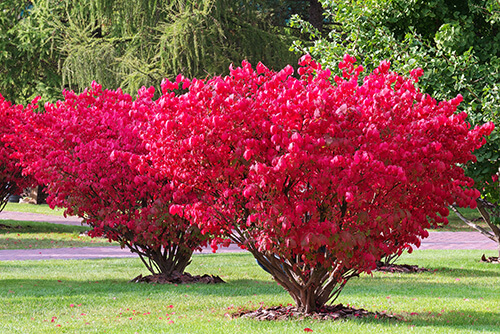
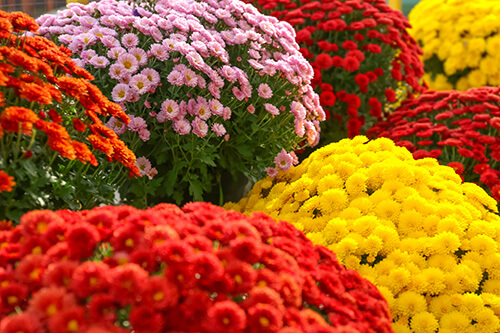 Chrysanthemums (Chrysanthemum spp.)
Chrysanthemums (Chrysanthemum spp.)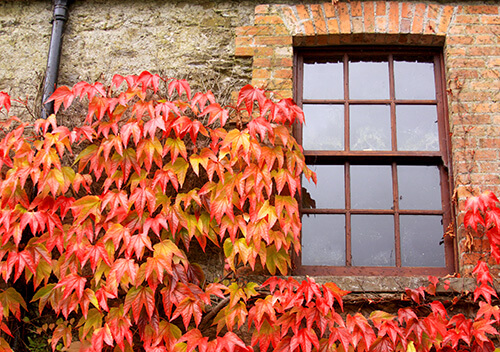 Virginia Creeper (Parthenocissus quinquefolia)
Virginia Creeper (Parthenocissus quinquefolia)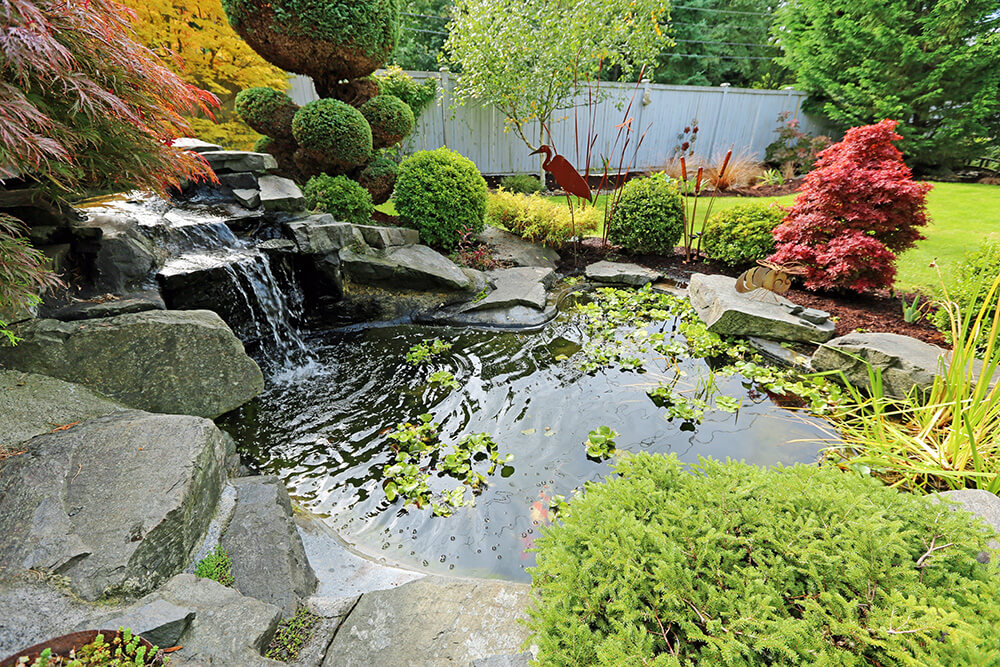
 Planting a variety of
Planting a variety of 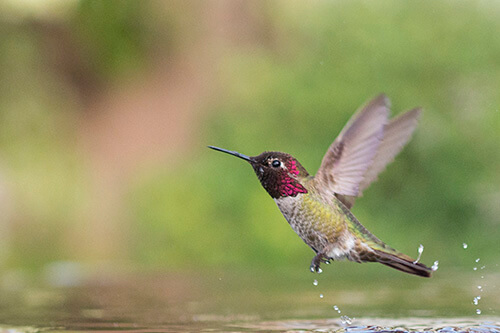 Providing a source of water is essential for wildlife in your backyard. Bird baths and
Providing a source of water is essential for wildlife in your backyard. Bird baths and  Keeping pets indoors or away from areas of wildlife activity is an important part of protecting wildlife in your backyard. Cats and dogs may be attracted to the small animals in your yard, such as birds, rodents, or other creatures. It is best to keep these pets inside or restrain them while they are outside so they do not disturb or harm any wildlife.Additionally, make sure that any outdoor dog runs are not set up in areas where wildlife likes to rest and feed. By taking these extra steps you can ensure that both your pets and the local wildlife stay safe and happy.
Keeping pets indoors or away from areas of wildlife activity is an important part of protecting wildlife in your backyard. Cats and dogs may be attracted to the small animals in your yard, such as birds, rodents, or other creatures. It is best to keep these pets inside or restrain them while they are outside so they do not disturb or harm any wildlife.Additionally, make sure that any outdoor dog runs are not set up in areas where wildlife likes to rest and feed. By taking these extra steps you can ensure that both your pets and the local wildlife stay safe and happy.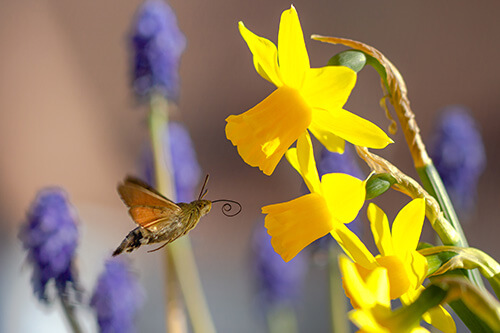 Providing undisturbed areas in your garden is a great way to support local wildlife. By leaving some areas of your garden untouched, you are giving animals the chance to make their own homes without interruption from people or pets.This can take the form of wild patches of grass, untended corners of your yard, or piles of sticks and logs that provide harborage for small creatures. Even if it seems like doing nothing is best, keeping these areas free from human activity and disturbance will be beneficial to the wildlife that makes use of them.
Providing undisturbed areas in your garden is a great way to support local wildlife. By leaving some areas of your garden untouched, you are giving animals the chance to make their own homes without interruption from people or pets.This can take the form of wild patches of grass, untended corners of your yard, or piles of sticks and logs that provide harborage for small creatures. Even if it seems like doing nothing is best, keeping these areas free from human activity and disturbance will be beneficial to the wildlife that makes use of them.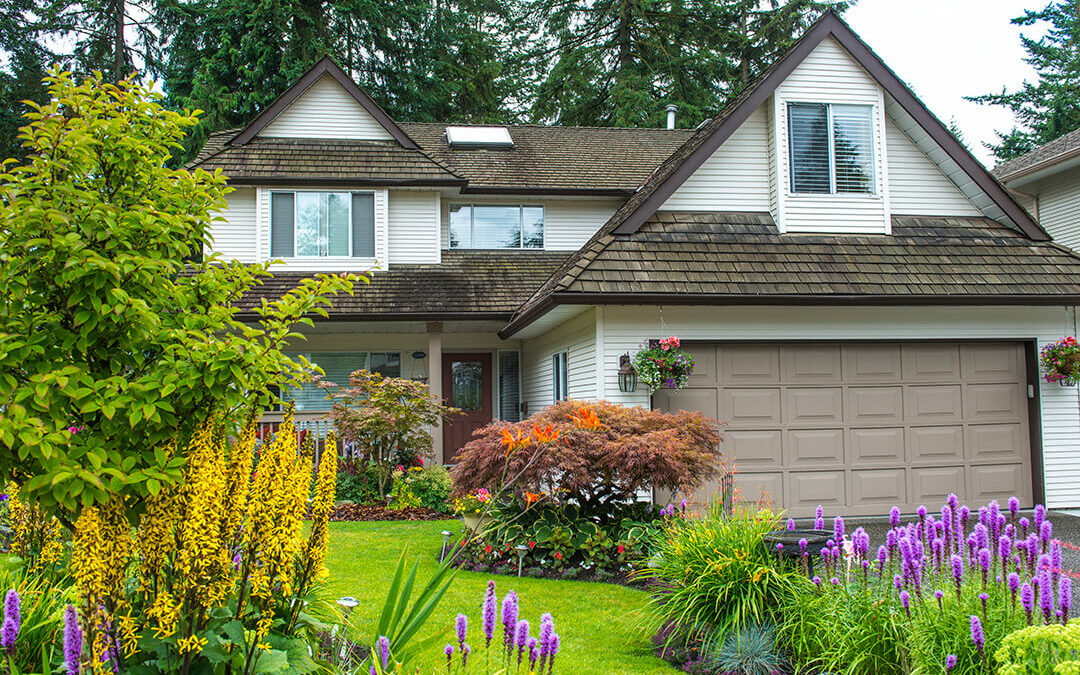
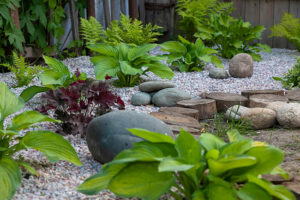
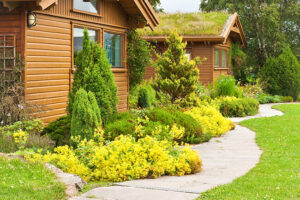
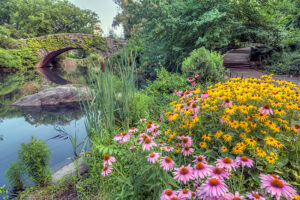
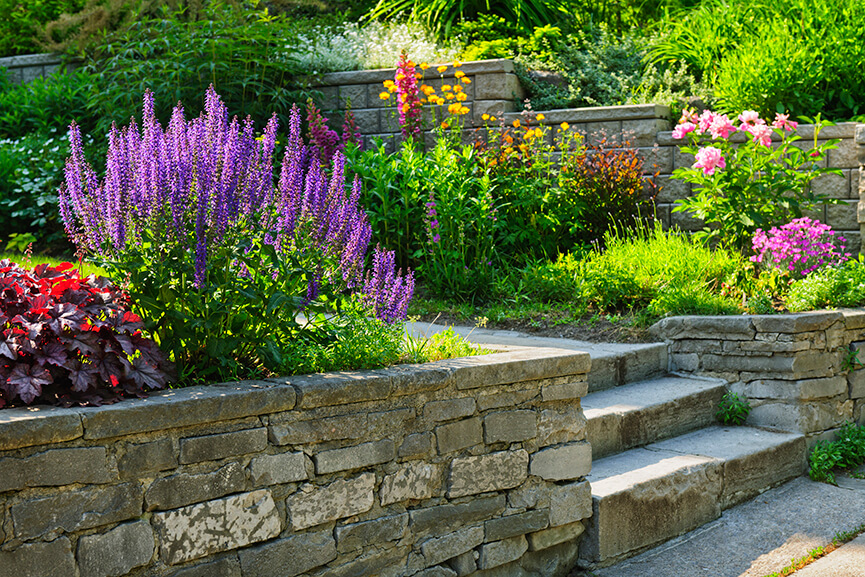
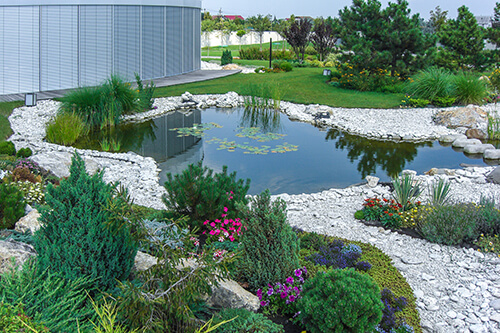 Groundcover for sun and shade are plants that tend to grow low to the ground and spread. These ranging plants do double duty in your flowerbeds. With their showy foliage and/or flowers, they add visual interest. But just as importantly, if not more so, they act much like mulch, helping to suppress weeds, reduce soil erosion, and retain moisture.
Groundcover for sun and shade are plants that tend to grow low to the ground and spread. These ranging plants do double duty in your flowerbeds. With their showy foliage and/or flowers, they add visual interest. But just as importantly, if not more so, they act much like mulch, helping to suppress weeds, reduce soil erosion, and retain moisture. A few of the reasons you might consider planting a groundcover:
A few of the reasons you might consider planting a groundcover: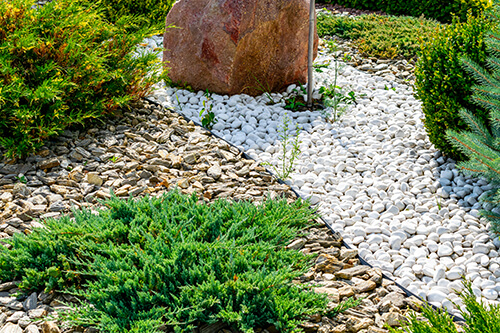 To cover steeply graded areas of grass. If your yard has any sloping areas that are hard to maintain, consider replacing the grass with a ground cover to eliminate the hassle.
To cover steeply graded areas of grass. If your yard has any sloping areas that are hard to maintain, consider replacing the grass with a ground cover to eliminate the hassle.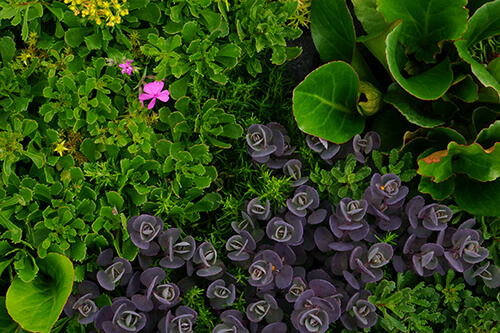 Groundcovers to plant in the sun
Groundcovers to plant in the sun Groundcovers to plant in the shade
Groundcovers to plant in the shade Note that some groundcovers, due to an aggressive spreading or creeping habit, can be invasive, so it’s important to take a bit of time to choose the right plants based on your goals and available space.
Note that some groundcovers, due to an aggressive spreading or creeping habit, can be invasive, so it’s important to take a bit of time to choose the right plants based on your goals and available space.